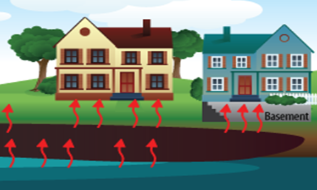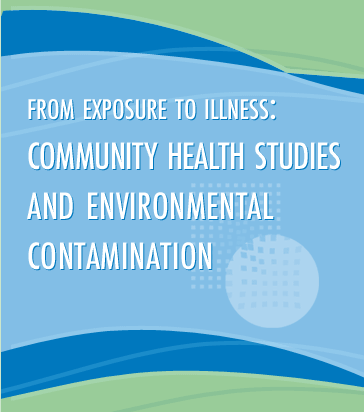 Tools for the Community
Tools for the Community
Providing opportunities, knowledge, tools and resources that enable communities to make informed decisions
Vapor Intrusion Information
Vapor intrusion occurs when vapor or gas from chemical contaminants underground migrate into nearby buildings. Click the here to learn more about vapor intrusion:

What is a Community Health Study?
The information in the link below shares the perspectives of public health scientists who are studying links between exposure to hazardous chemicals in the environment and health effects among residents in California communities.

Annual Stakeholder Roundtable Proceedings
Each year the CDPH Environmental Health Investigations Branch's Site Assessment Section (SAS) convenes a day-long Stakeholder Roundtable. The Roundtable involves community residents as well as representatives of non-governmental organizations, academia, and federal, state and local agencies. It offers an opportunity for participants to share experiences, and it gives SAS staff an opportunity to hear directly from residents about environmental health problems in their community. The Roundtable fosters a productive learning environment for participants and helps guide SAS's work.
If you are having difficulty accessing the following documents please contact Beth Saiki at (510) 620-5764 or Beth.Saiki@cdph.ca.gov to request this information in an alternate format.
Listening to South Gate: The Community’s Environmental Health Concerns
To evaluate environmental health problems in the city of South Gate, in Southeast Los Angeles, the California Department of Public Health (CDPH) applied the Protocol for Assessing Community Excellence in Environmental Health (PACE-EH), which was developed by the Centers for Disease Control and Prevention (CDC) and the National Association of County and City Health Officials.
PACE-EH is intended to help engage and empower residents in identifying, prioritizing and addressing environmental health problems in their neighborhoods. To implement the PACE-EH strategy, CDPH gathered information using the Community Assessment for Public Health Emergency Response (CASPER) framework. The findings of this work are reported here.
 Building a Community Air Monitoring Network Using Low Cost Sensors in South Gate
Building a Community Air Monitoring Network Using Low Cost Sensors in South Gate
The South Gate Community Environmental Action Team (CEHAT) is collaborating with the South Coast Air Quality Management District (SCAQMD) to provide residents of the South Gate community with air quality sensors that measure particulate matter (including PM 2.5), ozone and other air pollutants. The sensors are mounted outdoors and monitored remotely. The information produced by the sensors is available here:
- To learn more about how the South Gate CEHAT was formed, watch the video below (https://youtu.be/FWMR1L0Db64)